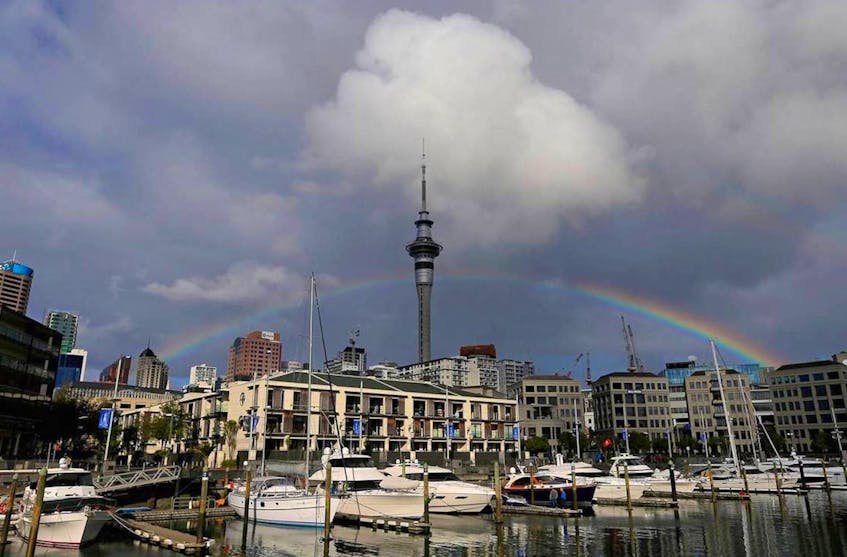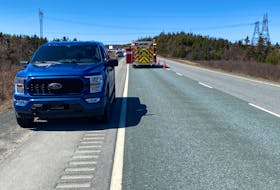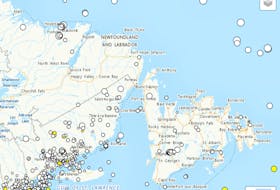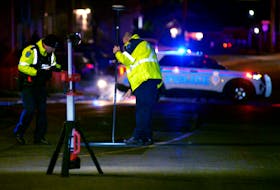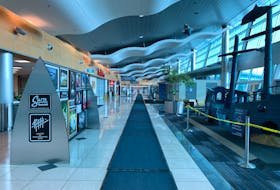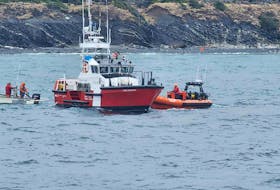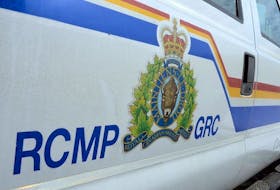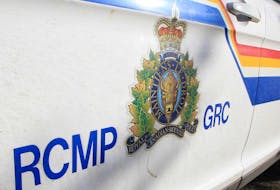The majority of Newfoundland and Labrador’s population lives on an island, and that has prompted numerous comparisons to the way other island jurisdictions have been handling COVID-19.
One of the most common references is to New Zealand.
New Zealand, with a population of almost five million, has had 1,570 cases and 22 deaths. This province, with just over one-tenth of New Zealand's population, has had 268 cases and three deaths.
On June 8, Chief Medical Officer of Health Dr. Janice Fitzpatrick was asked whether this province would follow the lead of New Zealand’s Prime Minister Jacinda Ardern and virtually eliminate pandemic health restrictions in light of low case numbers.
Fitzgerald wouldn’t budge from the gradual reopening plan.
"All the evidence right now would point to the fact that the prevalence in our province is low, but we cannot confirm that it is zero," she told reporters. "So, to put that train of thinking out there is potentially worrisome.”
On Friday, New Zealand was able to boast it had had no instances of community transmission for 100 days, largely due to travel restrictions quite similar to those in Newfoundland and Labrador.

It’s an impressive claim, although by definition, this province had gone more than 100 days by that point as well.
Community transmission refers to infection that can’t be traced to travel or other known cases.
The first known community transmission cases in Newfoundland were reported March 27 — two people in Central who had not travelled, and had not been known contacts of anyone else with the disease.
Fitzgerald used the occasion to caution vigilance.
“We have said on many occasions that we need to behave as if this virus is circulating in our communities already,” she said. “Today we have proof that this is true.”
Altogether, the province has only had seven cases of community transmission, and one of those was a mysterious positive test at a St. Lawrence long-term care facility that came out of nowhere and then disappeared.
Every case since about mid-April has been travel-related, or a close contact of same.
Streak ended
Meanwhile, New Zealand’s lucky streak ended Monday when authorities announced they could not trace the origin of the disease in four Aukland residents.
Ardern said the city will have to shut down from Wednesday until Friday while further investigations are undertaken. That means bars and businesses will close down again, and residents will be required to work from home.
"These three days will give us time to assess the situation, gather information, make sure we have widespread contact tracing so we can find out more about how this case arose and make decisions about how to respond to it once we have further information,” she said in a news conference.
During hearings on a court challenge against Newfoundland and Labrador’s travel ban last week, clinical epidemiologist Dr. Pat Parfrey point to New Zealand’s travel ban as a model for this province, and the parallels are many.
New Zealand only allows permanent residents to enter the country, but does offer exemptions for essential workers or on humanitarian grounds. It also requires anyone entering the country to self-isolate for 14 days, with rare exceptions.
But there are also stark differences, the most notable one being managed isolation. Incoming travellers are shuttled to designated sites — primarily hotels — where essentials such as food and accommodation are covered and their movements monitored.
Newfoundland has relied entirely on unmonitored isolation, with similar results.
Border testing
Frequent debate has arisen about the need for stricter measures at Newfoundland’s points of entry, including temperature checks and even COVID-19 testing for every arriving traveller.
Ottawa has started mandating routine temperature checks at airports, and the practice is expected to being in St. John’s next month.
In recent weeks, Opposition Leader Ches Crosbie has taken the opportunity to call for stricter measures whenever a new travel-related case occurs, as one did on Friday.
“The excuse that we cannot use COVID-19 testing as an additional level of protection like other jurisdictions such as Iceland or New Zealand is mystifying,” he wrote in a release. “We have limited points of entry for the virus, let’s use our geography to our advantage and keep the people of Newfoundland and Labrador safe.”
New Zealand does not offer testing at its airports except for staff and flight personnel, or if someone is experiencing symptoms. Proof of a pre-flight negative test result is sometimes required from those arriving from certain countries.
However, those in quarantine are tested after three days, something this province does not do unless someone is reporting symptoms. A test is also required before leaving quarantine.
Xenophobia
One less pleasant commonality between this province and New Zealand is the stigma associated with imported coronavirus cases.
Both jurisdictions have seen xenophobic remarks directed at those returning from travel outside the jurisdiction.
“In a nation in the rare position of returning to normal life free from COVID-19, New Zealanders are roiling with anxiety as coronavirus cases ratchet up in other countries, fearing the virus could be imported here,” Charlotte Graham-McLay wrote in The Guardian on June 6. “And some would rather pull up the drawbridge. “
Graham-McLay pointed to one woman who received a backlash after complaining on social media of being unable to grab some water or use the bathroom before being put on a bus for hours to the nearest quarantine facility.
“Stay away from us until you’re declared safe,” one person replied. “So sorry if we don’t care about your food needs.”
Despite the paranoia about incoming viruses, however, New Zealand shares one other attribute with Newfoundland and Labrador.
Face masks are recommended in public, but are not mandatory.
Peter Jackson is a Local Journalism Initiative reporter covering health care for The Telegram.

